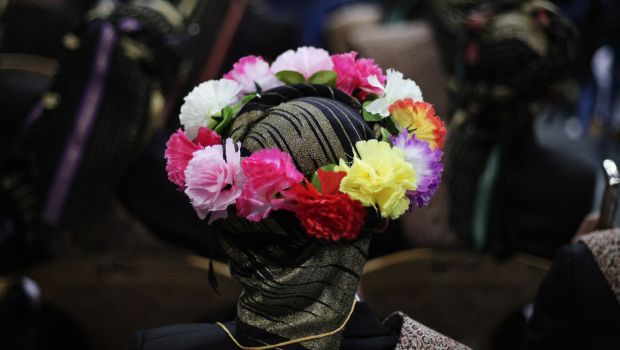Child marriage is a phenomenon found around the world, including in Arab societies. Yemen is the most prominent of the Arab countries where child marriage is at issue.
Child marriage is found most frequently in rural, poverty-stricken areas. However, poverty is not the only reason families and societies encourage underage marriage. There is a cultural and social acceptance of child marriages and, furthermore, there are those who seek to bring religion into the debate, knowing both that religion is a fundamental and entrenched component of the Yemeni identity, and that the issue is related to the interpretation of Islamic Shari’a law.
The public—and many religious leaders—mostly take a moderate approach to the issue of child marriage, mixing the prevailing attitudes of our era with the founding rules of our religion. However, a minority are seeking to impose their radical beliefs on the issue by resisting the enactment of legislation providing for a minimum marital age.
I admit that people, especially in rural areas where literacy rates are low and customs and traditions prevail over law, continue to practise child marriage. However, introducing a law governing the matter would limit the spread of this phenomenon, changing attitudes against the practice and eventually making it a taboo. Only then would everyone in society realize the benefits of such a law. Furthermore, they will realize that by enacting legislation, governments seek to promote, rather than damage, people’s interests.
Without doubt, the need for wide-ranging awareness campaigns will arise both before and after the enactment of legislation to communicate the dangers early marriages pose on girl as individuals and on the entire family. These campaigns need to demonstrate the importance of wives being educated in order to take a good care of the family, and the fact that society in its entirety needs an educated population capable of advancing it and confronting the challenges and burdens of development. Given that women make up 50 percent of humanity, we cannot continue to neglect educating and training them or integrating them into society by encouraging their full and effective participation.
First and foremost in the fight against child marriage must be conveying the fact that being married at a young age has negative effects on girls’ normal growth—not only physical growth, but also their mental and psychological development. No girl that age can be fully ready to bear the responsibilities of marriage. The risks are not only to personal development. Yemen is facing enormous developmental challenges, high population growth and fertility rates being among the most serious, 3.1 percent and 7.4 percent per annum respectively, further complicating economic and social issues.
The second part of the fight to eradicate this phenomenon should be based on people’s cultural and religious beliefs. We must assure people that establishing a minimum age for marriage does not in any way go against the core of the Islamic Shari’a, a body of law that raises the status and dignity of human beings and protects their interests.
Today, many organizations are concerned with this issue, which has become part of a wide debate both inside and outside Yemen. At the forefront of these bodies are media and human rights activists. The Women’s National Committee of Yemen, a governmental body, worked on this issue for more than a decade, particularly with regards to calling for the enactment of a legislation restricting child marriage. Furthermore, Yemen’s Ministry of Human Rights is working to defend the rights of vulnerable groups, particularly women and children.
Now that the issue of child marriage has been raised at the Yemeni National Dialogue Conference, human rights groups that say the absence of a minimum age law violates the right to childhood have become more vocal. There are also those who support the cause within the Yemeni parliament.
All of this action is a source of power and an opportunity to challenge this reality. Child marriage is not a logical part of a modern society, which is marked by a greater advocacy of human—and particularly children’s—rights.
